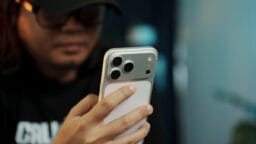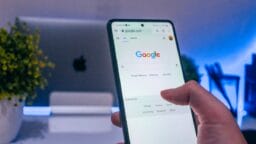In both bustling urban centers and serene suburban landscapes, the incidence of iPhone theft is morphing into a digital calamity. Perpetrators are no longer merely pilfering devices; they are usurping entire digital identities. A solitary passcode can unlock access to bank accounts, intimate photos, and confidential correspondence.
Enter Apple’s Stolen Device Protection, a revolutionary feature introduced in iOS 17.3, meticulously crafted to thwart data breaches.
This security enhancement, which began its global rollout in January 2024, effectively metamorphoses your iPhone into an impregnable vault, rendering it secure even if assailants are privy to your passcode.
Innovative Mechanisms of Stolen Device Protection
Upon activation, Stolen Device Protection mandates biometric authentication (Face ID/Touch ID) for crucial functions, such as accessing saved passwords or payment options. In contrast to conventional verification methods, it eliminates any fallback to passcode entry—thieves are unable to circumvent biometric locks even if they have witnessed you input your code.
Significantly, the system employs geofencing technology. Should your iPhone identify an unfamiliar locale (for example, a known theft area), it initiates a 1-hour security delay for high-risk operations like altering your Apple ID password. During this critical interval, an additional biometric scan is required.
As cybersecurity authority Bruce Schneier articulated in Wired (2023), “Location-aware delays compel thieves into a time-sensitive race they’re unlikely to win.”
For optimal security, users can activate the “Require Security Delay” setting to “Always”, bypassing location-based checks and enforcing dual biometric confirmations universally.
Setting Up Your iPhone’s Anti-Theft Arsenal
Enabling this formidable barrier requires merely a minute:
- Upgrade to iOS 17.3+ (Settings → General → Software Update).
- Verify that two-factor authentication and Find My iPhone are activated.
- Access Settings → Face ID & Passcode → Stolen Device Protection → Toggle On.
Apple has outlined four essential prerequisites:
- Passcode activated
- Face ID/Touch ID configured
- Significant Locations enabled (Settings → Privacy → Location Services → System Services)
- Find My iPhone is operational
As reported by BGR in May 2024, thieves are unable to disable these configurations remotely, even with your Apple ID credentials.
Implications of This Pivotal Development
Prior to the introduction of iOS 17.3, a stolen iPhone coupled with a passcode signified complete vulnerability. Now, Stolen Device Protection engenders critical response intervals:
- Biometric deadlocks obstruct password resets or Apple Pay access.
- Security delays afford owners the opportunity to remotely erase devices via Find My.
- Web restrictions inhibit thieves from modifying settings through iCloud.com.
Apple’s Security Report for 2024 indicates a remarkable 42% reduction in successful data breaches among beta testers who utilized this feature.
Stolen Device Protection transcends mere functionality—it stands as your iPhone’s ultimate safeguard. By integrating biometrics, geofencing, and delayed access protocols, Apple provides what The Verge has termed “enterprise-grade security for everyday users.” Update your device, activate this barrier, and transform potential vulnerability into staunch vigilance. Enact this feature today—before the specter of theft looms.
Essential Insights
Q: Does Stolen Device Protection function offline?
A: Indeed. Location assessments utilize pre-stored data about “familiar places.” Essential actions still necessitate biometric verification without internet connectivity.
Q: Will this affect my iPhone’s battery life?
A: No. Apple has informed TechCrunch (March 2024) that background location checks utilize less than 0.3% of daily power.
Q: Can I deactivate Stolen Device Protection remotely?
A: It can only be accomplished via Find My if the device is online. Otherwise, physical access using the passcode is mandatory.
Q: Are Apple Watch or Mac covered by this feature?
A: Currently, it is exclusive to iOS. Apple’s roadmap for Q2 2024 indicates potential expansion to watchOS and macOS later in the year.
Q: What if thieves compel me to disable it?
A: Adjusting settings requires both your passcode and biometric confirmation. If the security delay is active, they would need to detain you for over an hour.
Q: Are older iPhone models supported?
A: Compatibility is restricted to devices operating on iOS 17.3 or newer, specifically the iPhone XS/XR and subsequent models.
Source link: Inews.zoombangla.com.






